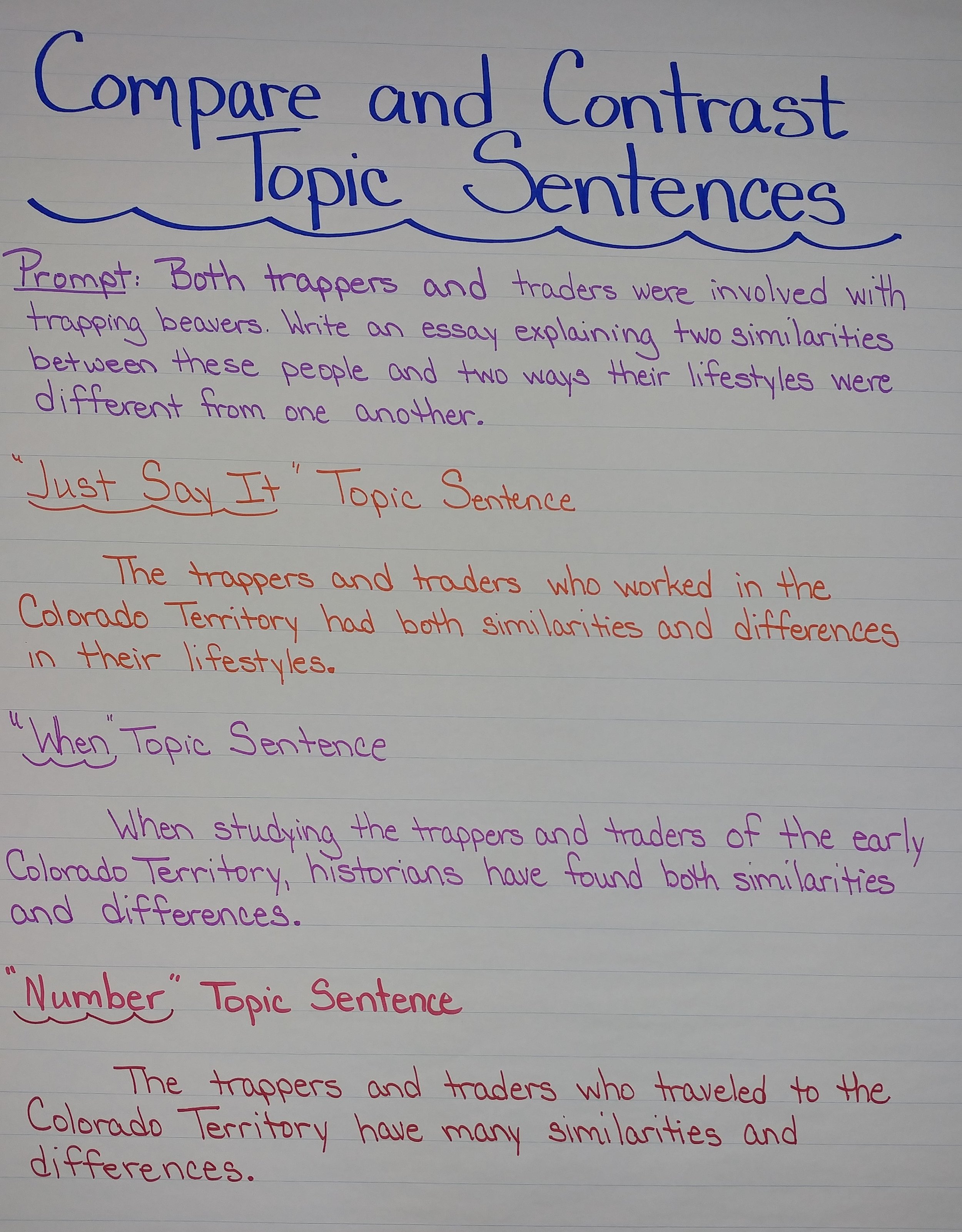We are continuing to focus on informational writing in our classroom. In order to give this writing context, we have been combining it with our History unit on Trappers and Traders. We have used this content to review different non-fiction text structures and identify prompts which required us to respond in a specific text structure. www.writenow-rightnow.com/blog/2018/informational-writing-text-structures-and-prompts-1 As we began to respond to the prompts, students were working to write appropriate topic sentences for each text structure. This led to a discussion in our classroom – “Does every type of topic sentence work for every type of writing?”
Using the prompts from our study of text structures, we began to experiment with different topic sentence types. I wanted the students to have a bank of topic sentences they could draw on when asked to write to a variety of informative writing prompts. As we experimented and wrote informational essays, we collected topic sentences which worked well with each type of text structure.
Compare and Contrast Topic Sentences
Prompt: Both trappers and traders were involved with trapping beavers. Write an essay explaining two similarities between these people and two ways their lifestyles were different from one another.
“Just Say It” Topic Sentence
The trappers and traders who worked in the Colorado Territory had both similarities and differences in their lifestyles.
“When” Topic Sentence
When studying the trappers and traders of the early Colorado Territory, historians have found both similarities and differences between these two groups.
“Number Topic” Sentence
The trappers and traders who traveled to the Colorado Territory have many similarities and differences.
Cause and Effect Topic Sentences
Prompt: Trappers came to the Colorado Territory in the early 1800’s. Write an informative essay explaining a positive and negative effect on the environment due to the arrival of the trappers.
“Just Say It” Topic Sentence
The trappers who came to the Colorado Territory had both a positive and negative impact on the natural environment.
“When” Topic Sentence
When the trappers arrived in the Colorado Territory, they had a positive and negative impact on the region’s environment.
“As” Topic Sentence
As historians study the history of Colorado, they have identified both the positive and negative effects on the environment caused by the arrival of the trappers.
Description Topic Sentences
Prompt: Trappers had a very distinctive appearance. Write an essay describing the unique clothing of these men.
“Just Say It” Topic Sentence:
Trappers were easy to identify by their distinctive clothing choices.
“If” Topic Sentence
If spotted on the trail, an early beaver trapper was easy to identify by his clothing and appearance.
“Number” Topic Sentence
The requirements of living outdoors in rugged conditions led trappers to make many unique clothing choices.
Problem and Solution Topic Sentences
Prompt: Once trappers had gathered beaver pelts, they needed a place to gather to trade. Write an essay explaining how trappers solved the problem of trading with others.
“Just Say It” Topic Sentence:
Determining a way to trade with others was a problem faced by many trappers.
“As” Topic Sentence:
As trappers gathered their bounty of beaver skins, they were faced with a problem. How could they sell their pelts and purchase items they needed for survival?
“When” Topic Sentence:
When the beaver trapping season was completed, the trappers were faced with a dilemma. How could they now trade their pelts and purchase supplies?
“Question” Topic Sentence:
“Now that I have trapped these beavers and collected their pelts, how can I exchange this for needed money and supplies?” This was a question posed by many trappers at the end of the trapping season.
Sequential Order Topic Sentences
Prompt: Trappers had to devise the best ways to trap beavers without harming the fur. Write an informative paragraph explaining the steps a trapper followed to capture a beaver.
“Just Say It” Topic Sentence:
In order to trap a beaver, the mountain man had to follow specific steps.
“Number” Topic Sentence:
Three steps must be followed in order to successfully trap beavers.
“If – Then” Topic Sentence:
If a mountain man wanted to be a successful beaver trapper, then he must follow specific steps in the correct order.
“As” Topic Sentence:
As men traveled to the Colorado Territory to trap beavers, they quickly learned the steps required to capture these animals.
Through our work with informational text, we have discovered that some types of topic sentences work best with certain text structures. We have also learned a lot about the lives of the early trappers and traders! Our fourth-grade writers have gained another tool they can use when writing informational text to a variety of prompts.






